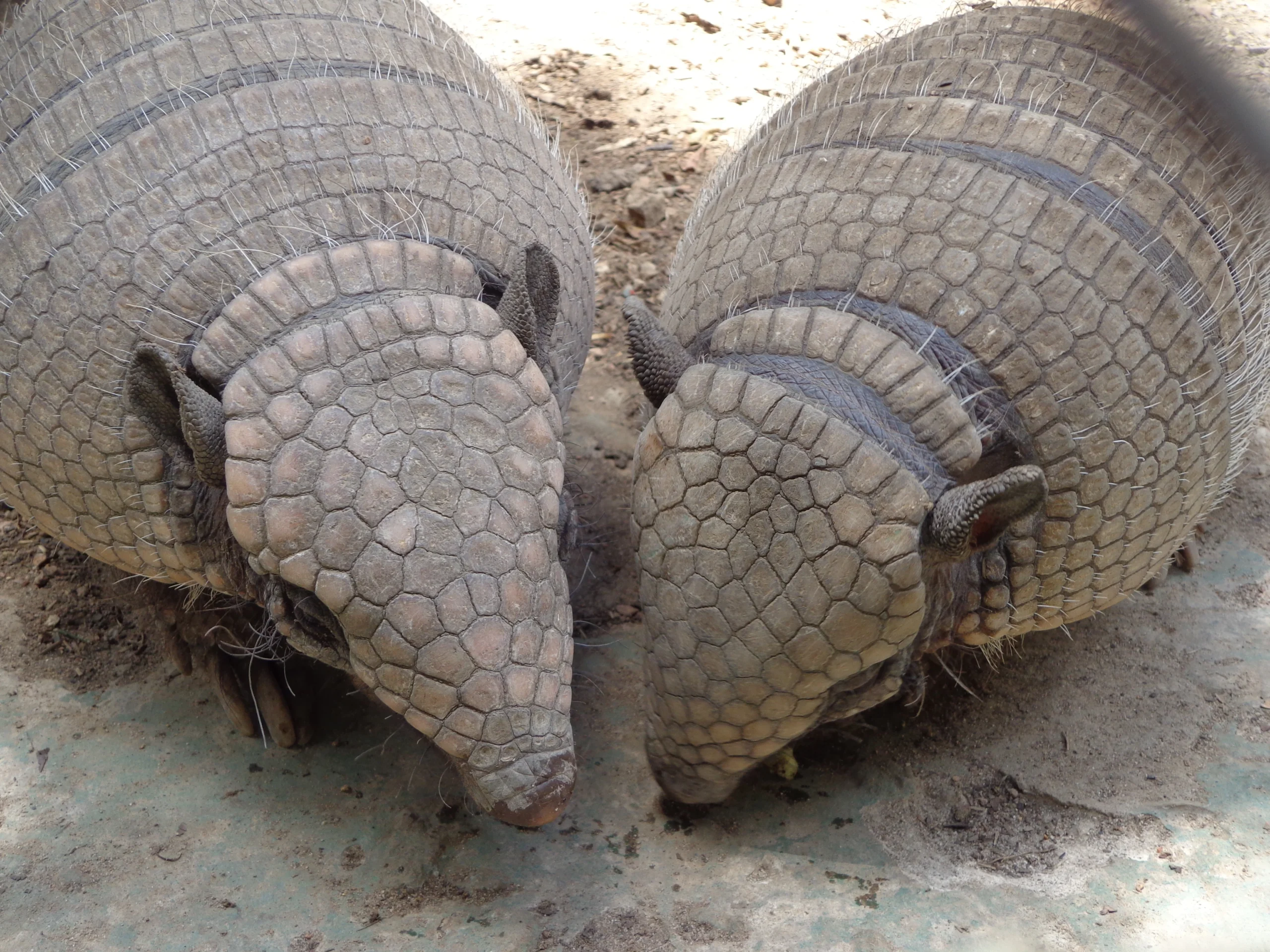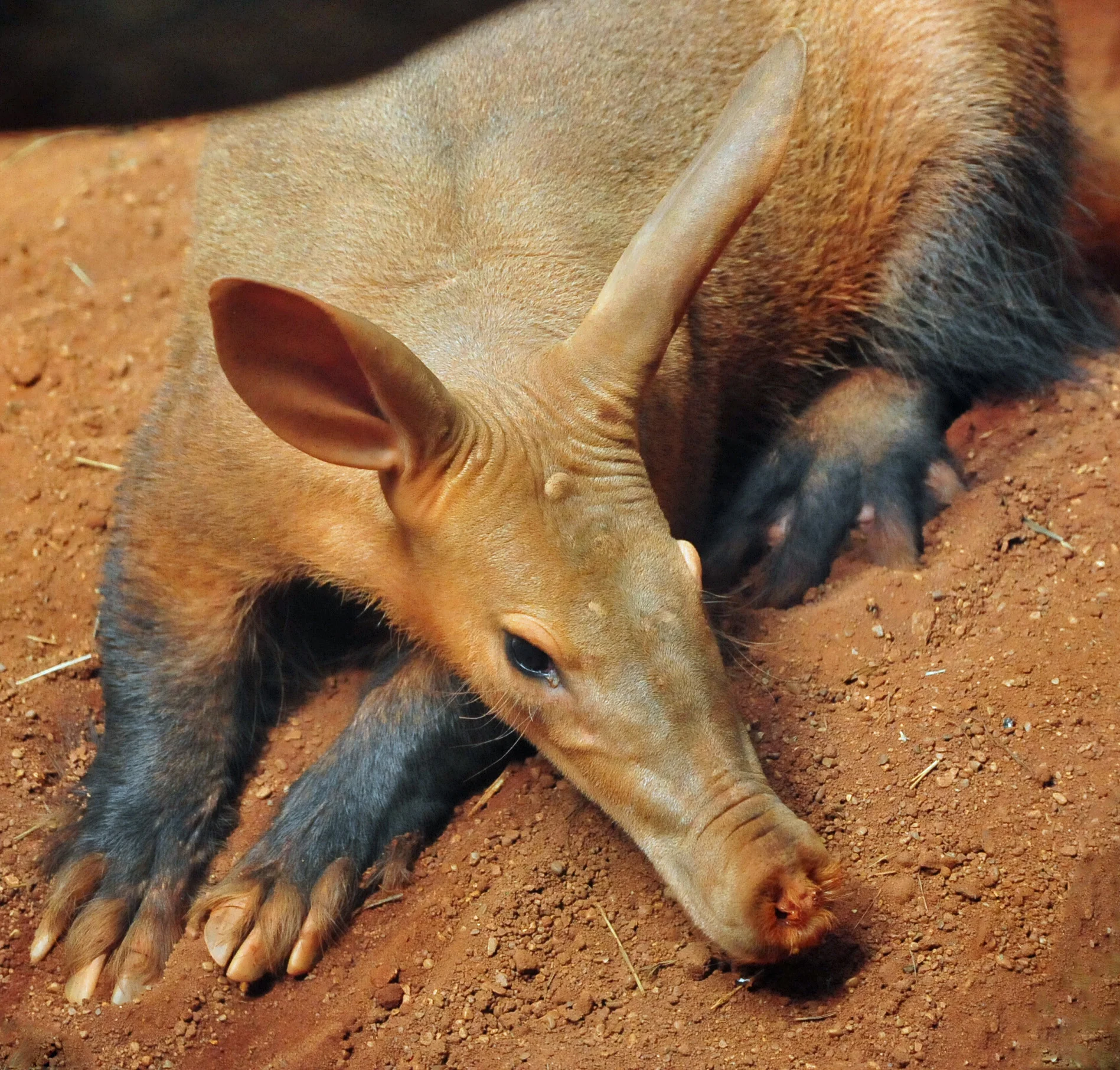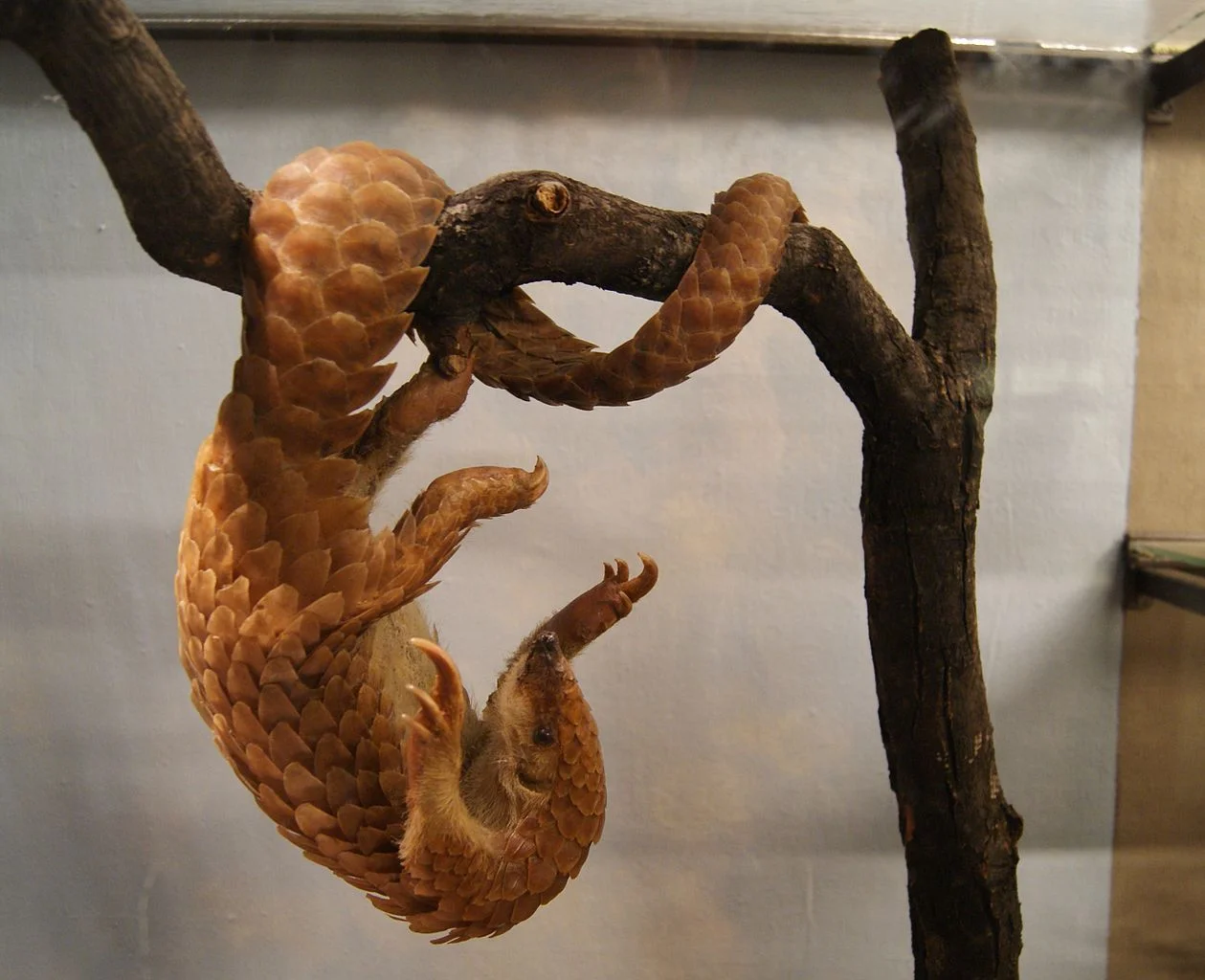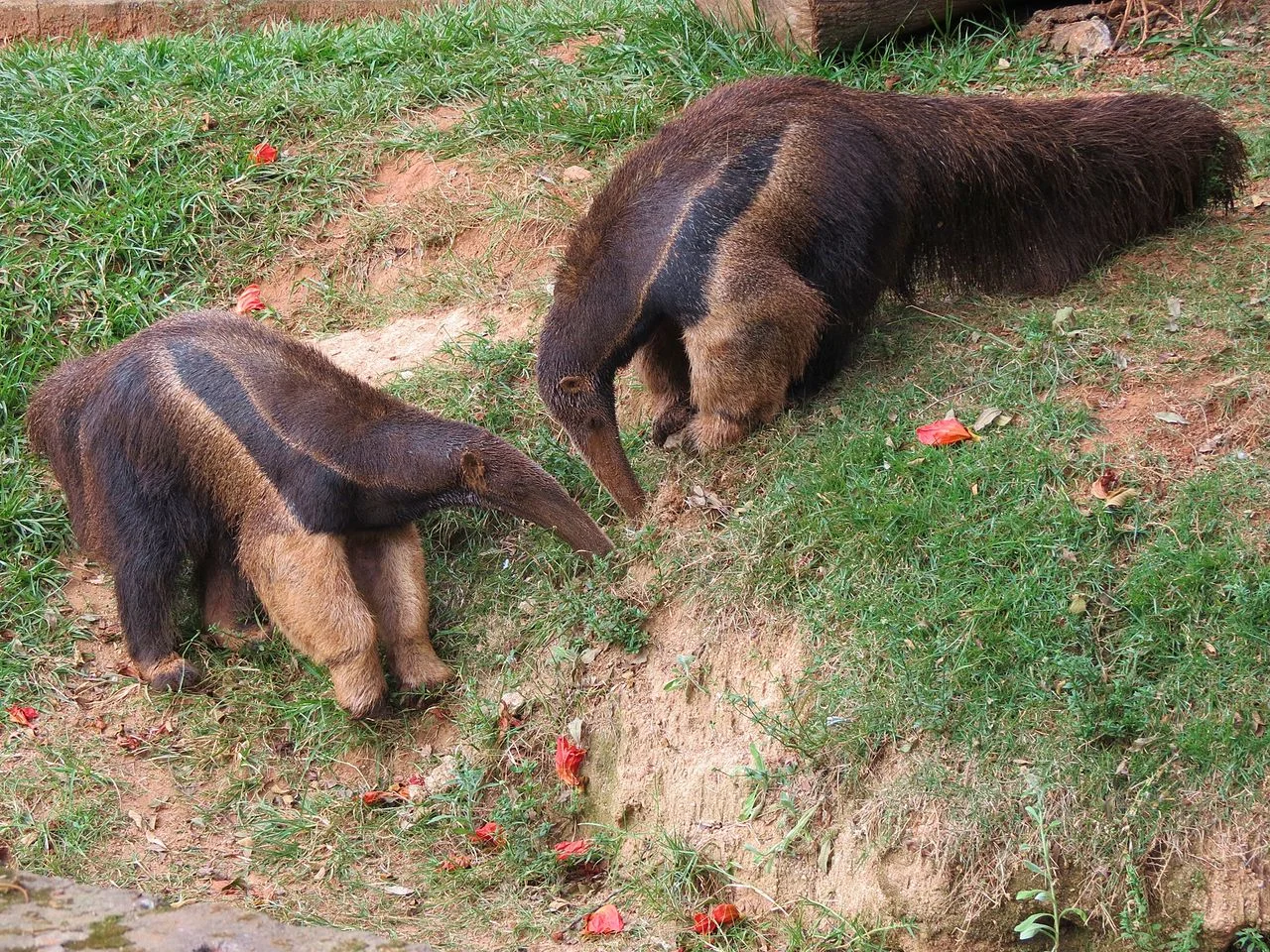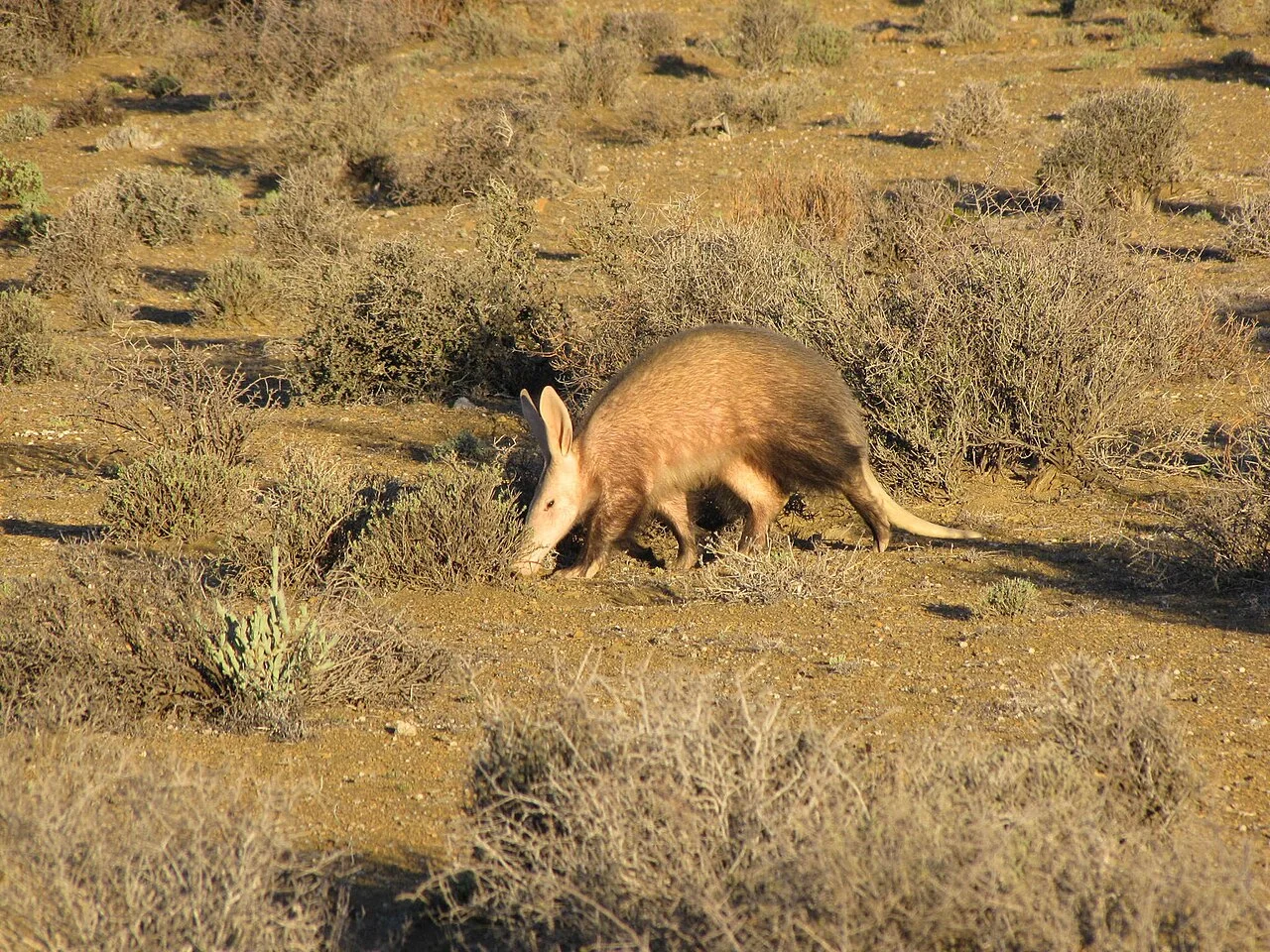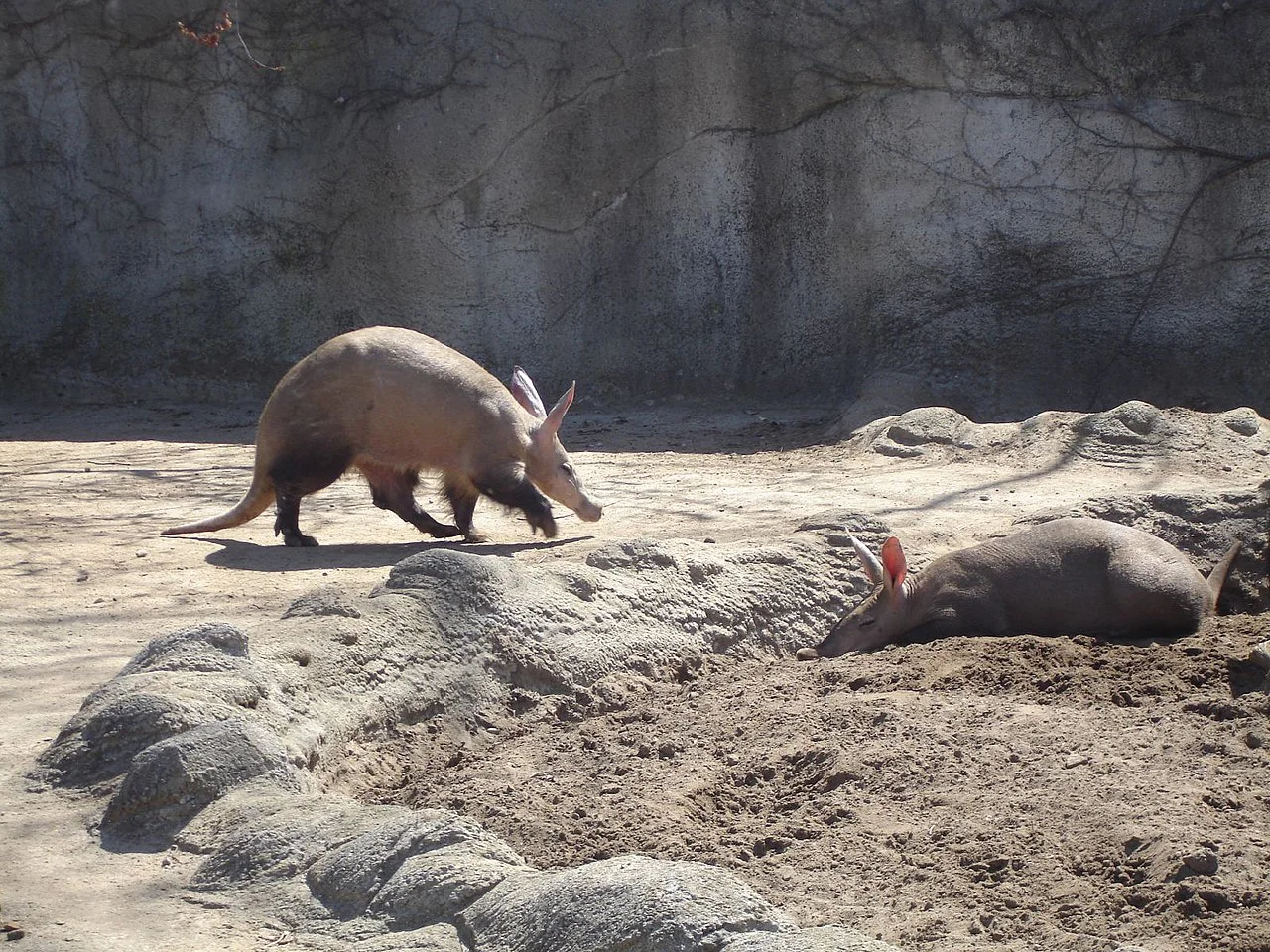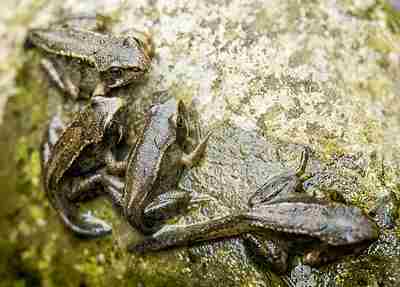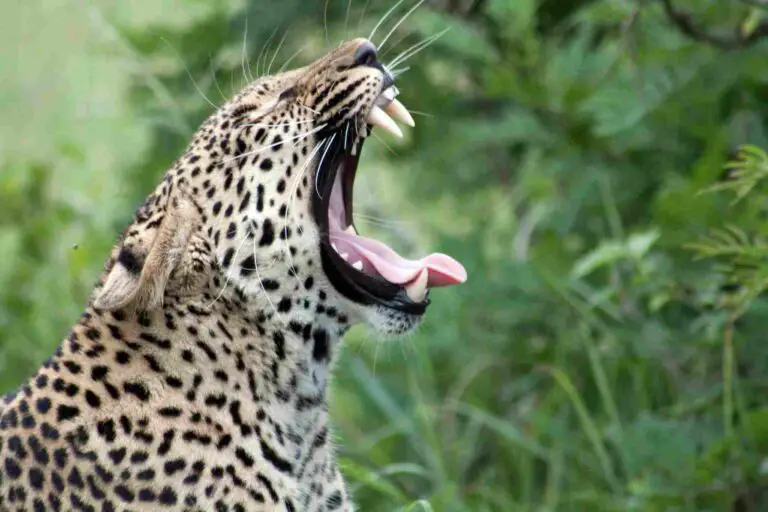Pangolin Vs Armadillo Who Would Win, Overall Comparison
Distinguishing between pangolins and armadillos unveils unique traits, from protective armor to habitat preferences. This exploration leads us to predict the outcome of a hypothetical encounter between the two species. Armadillos, with their larger size and more offensive behavior, are likely to emerge victorious in a direct confrontation with pangolins. Now, let’s delve into the specific characteristics that contribute to this prediction and further examine their distinct features.
I. Pangolin vs Armadillo Fight Prediction: An Overview of Comparison:
– In a face-off between a pangolin and an armadillo, the advantage leans toward the armadillo. The armadillo’s larger size and more assertive behavior make it better equipped for a confrontational situation. Armadillos’ defensive capabilities, facilitated by their bony plates, provide a significant edge over pangolins, which are more prone to adopting a defensive posture by curling into a ball. While both species are generally timid, the armadillo’s offensive tendencies and protective armor position it as the likely winner in a direct confrontation.
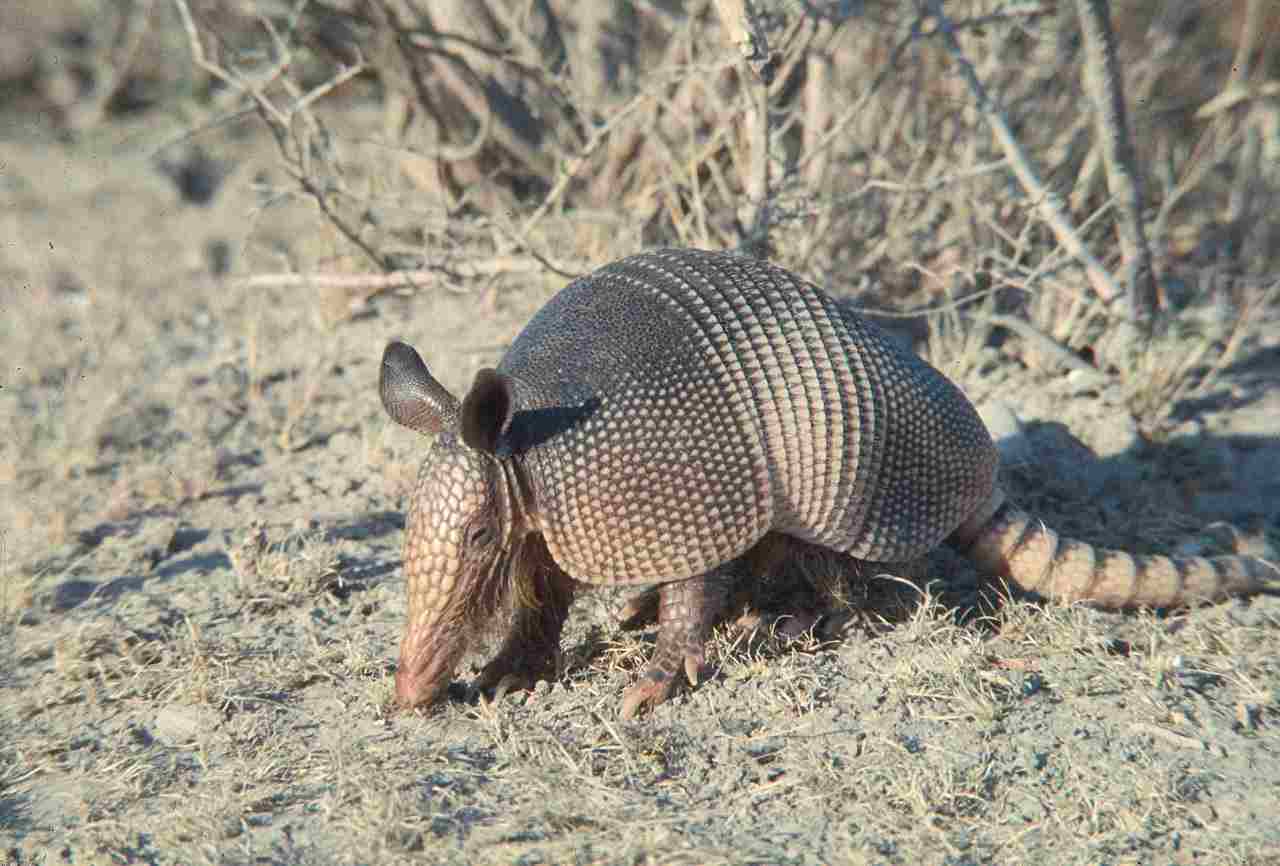
II. Protective Armor:
– Armadillos showcase a unique defense mechanism with bony plates covering most areas of their skin, creating an armor-like shield. This adaptation enhances their ability to withstand environmental challenges and potential threats. Pangolins, in contrast, rely on keratin scales that cover their entire body, providing a different form of protection.
III. Habitat Distribution:
– Armadillos are commonly found in the Americas, while pangolins inhabit Asia and Africa. Their adaptability allows them to thrive in various ecosystems, contributing to their distinct roles within different geographical regions.
IV. Size and Behavioral Traits:
– Armadillos, being larger and heavier, exhibit a more proactive and offensive behavior. This characteristic, coupled with their protective armor, gives them an advantage in a hypothetical confrontation. Pangolins, on the other hand, are more likely to adopt a defensive stance by curling into a ball.
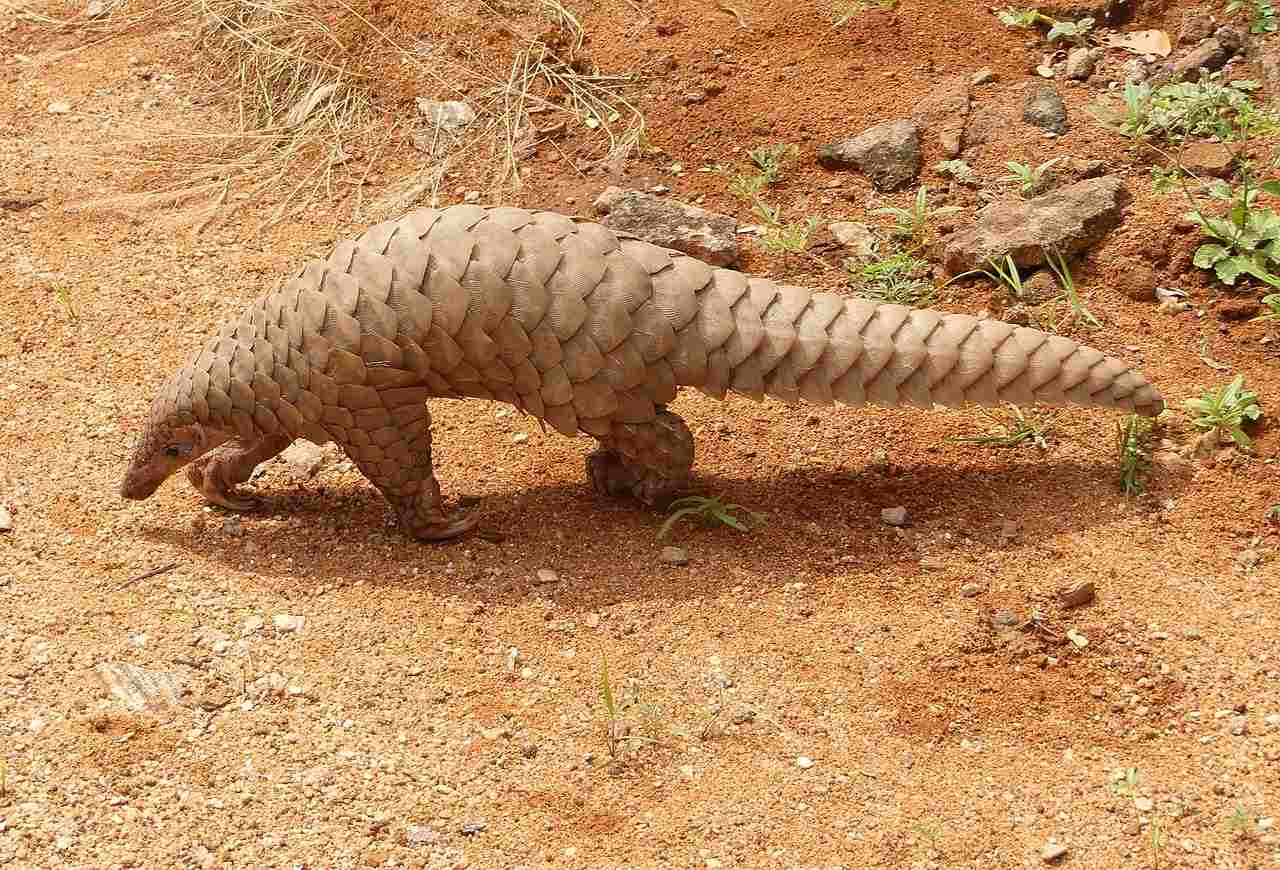
V. Environmental Adaptability:
– The unique adaptations of armadillos and pangolins highlight their ability to thrive in diverse environments. Understanding their habitat preferences and behavioral traits contributes to appreciating their ecological significance.
VI. Conservation Significance:
– Recognizing the specific features of armadillos and pangolins is crucial for conservation efforts. Tailoring strategies to address their distinct characteristics and ecological needs is essential to ensure the preservation of these remarkable mammals.
VII. Appreciating Mammalian Diversity:
– Exploring the differences between armadillos and pangolins allows us to appreciate the rich diversity within the mammalian world. Each species contributes uniquely to the tapestry of life, emphasizing the importance of conservation and understanding for these remarkable mammals.
*Details of Comparison
| Criteria | Pangolin | Armadillo |
| Taxonomy | Order: Pholidota, Family: Manidae, Genus: Manis |
Order: Cingulata, Families: Chlamyphoridae and Dasypodidae, Various Genera
|
| Appearance | Mammalian with keratin scales |
Bony, armored shell divided into bands
|
| Size | 30-100 cm, 1-35 kg |
15-150 cm, 0.1-60 kg
|
| Weight | 1-35 kg | 0.1-60 kg |
| Dentition | No teeth, stomach muscles for grinding insects |
Small, peg-like teeth for omnivorous diet
|
| Physical Offensive Advantages | Sharp claws, protective scales |
Digging claws, bony armor
|
| Physical Defensive Advantages | Rolling into a ball, protective scales |
Retracting into a hard shell, rolling into a ball (some species)
|
| Speed | Moderate | Moderate |
| Agility | Limited mobility on land |
Versatile movement on land, particularly in digging
|
| Senses | Limited eyesight, relies on smell and hearing |
Average eyesight, keen sense of smell
|
| Overall Physical Capacity | Climbing, accessing insect-rich habitats |
Strong digging abilities, versatile land movement
|
| Habitat Preference(s) and Geographic Region | Africa and Asia, forested areas and savannas |
Americas, diverse habitats including grasslands, rainforests, and deserts
|
| Tracks | Claw marks, tail drags, digging patterns |
Clawed footprints, distinct toe marks, trails showcasing burrowing
|
| Lifespan | 10-20 years | 4-15 years |
| Mode of Feeding | Insectivores, using a long tongue |
Omnivores, digging for insects, roots, and tubers
|
| Intelligence | Problem-solving skills |
Problem-solving skills related to foraging and survival
|
| Social Behavior | Generally solitary, limited social interactions |
Varied social structures, ranging from solitary to social
|
| Mode of Reproduction | Generally solitary breeders, single offspring |
Diverse reproductive strategies, varying social structures
|
| Parental Behavior | Limited parental care, mothers care for young for a period |
Varied parental care, some exhibit extended care
|
| Proximity to Human-Inhabited Areas | Inhabit areas near human settlements |
Inhabit areas near human settlements
|
| Behavior Toward Humans | Generally avoid direct contact |
Generally avoid direct contact, varied responses
|
| Danger Posed to Humans | Generally not dangerous, caution required when handling |
Generally not dangerous, caution required when handling, potential disease transmission
|
| Associated Precautions | Caution required when handling, specific considerations for diseases |
Caution required when handling, specific considerations for diseases
|
| Conservation Status | Generally more critically endangered |
Varies among species, facing threats from habitat destruction and hunting
|
| Conclusion – Similarities | Defense mechanisms through scales and shells |
Human-wildlife interaction challenges
|
| Conclusion – Differences | Pangolins are generally more solitary with limited parental care |
Conservation status varies, with pangolins facing a more critical endangerment
|
Key Points
- Both pangolins and armadillos have distinct appearances and defensive strategies.
- Pangolins generally exhibit a more uniform size range compared to the diverse sizes observed in armadillos.
- Armadillos show more diverse parental behaviors, ranging from extended care to more limited involvement.
- Conservation challenges differ, with pangolins generally more critically endangered due to illegal trade.
- Human-wildlife interactions pose challenges for both species, including habitat encroachment and potential threats.
1. Taxonomy:
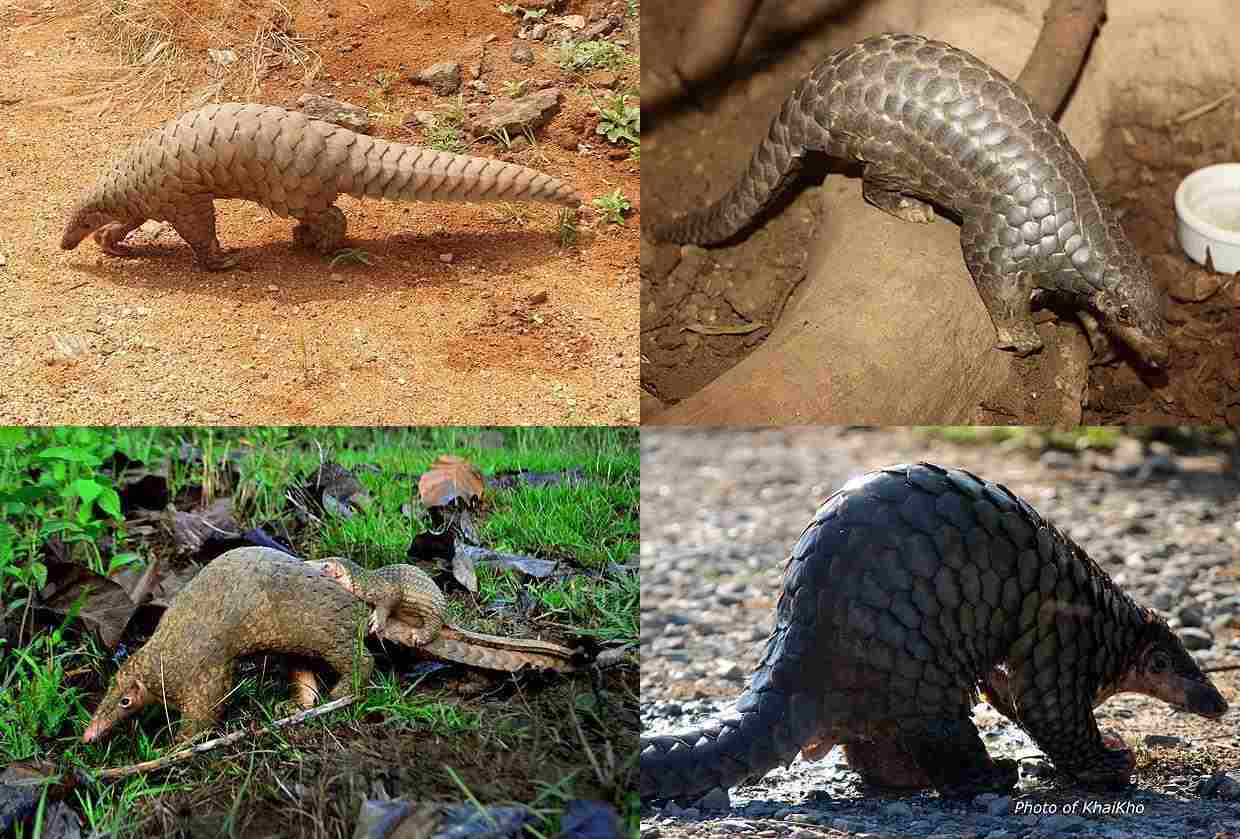
Pangolin:
Order: Pholidota
Family: Manidae
Genus: Manis
Species: There are eight species, including Manis tricuspis (White-bellied pangolin) and Manis pentadactyla (Chinese pangolin).
Armadillo:
Order: Cingulata
Family: Chlamyphoridae and Dasypodidae
Genus: Various genera, including Dasypus, Tolypeutes, and Euphractus
Species: There are around 20 species, such as Dasypus novemcinctus (Nine-banded armadillo) and Tolypeutes matacus (Southern three-banded armadillo).
2. Appearance:
Pangolin:
Covered in protective keratin scales, resembling an artichoke when curled up.
Long, sticky tongue for extracting ants and termites.
Mammalian appearance with a distinct scaly exterior.
Armadillo:
Characterized by a bony, armored shell divided into bands.
Range of sizes and appearances, from small, sleek types to larger, robust species.
Possesses a snout, sharp claws, and a relatively short tail.
Comparison: Pangolins and armadillos differ significantly in their external features, with pangolins showcasing a scaly mammalian appearance, while armadillos are known for their bony armor.
Ecological Implications: These distinct appearances contribute to their respective ecological roles, with pangolins adapting for efficient insectivory through their scales and long tongues, while armadillos employ their armored shells for protection against predators.
3. Size:
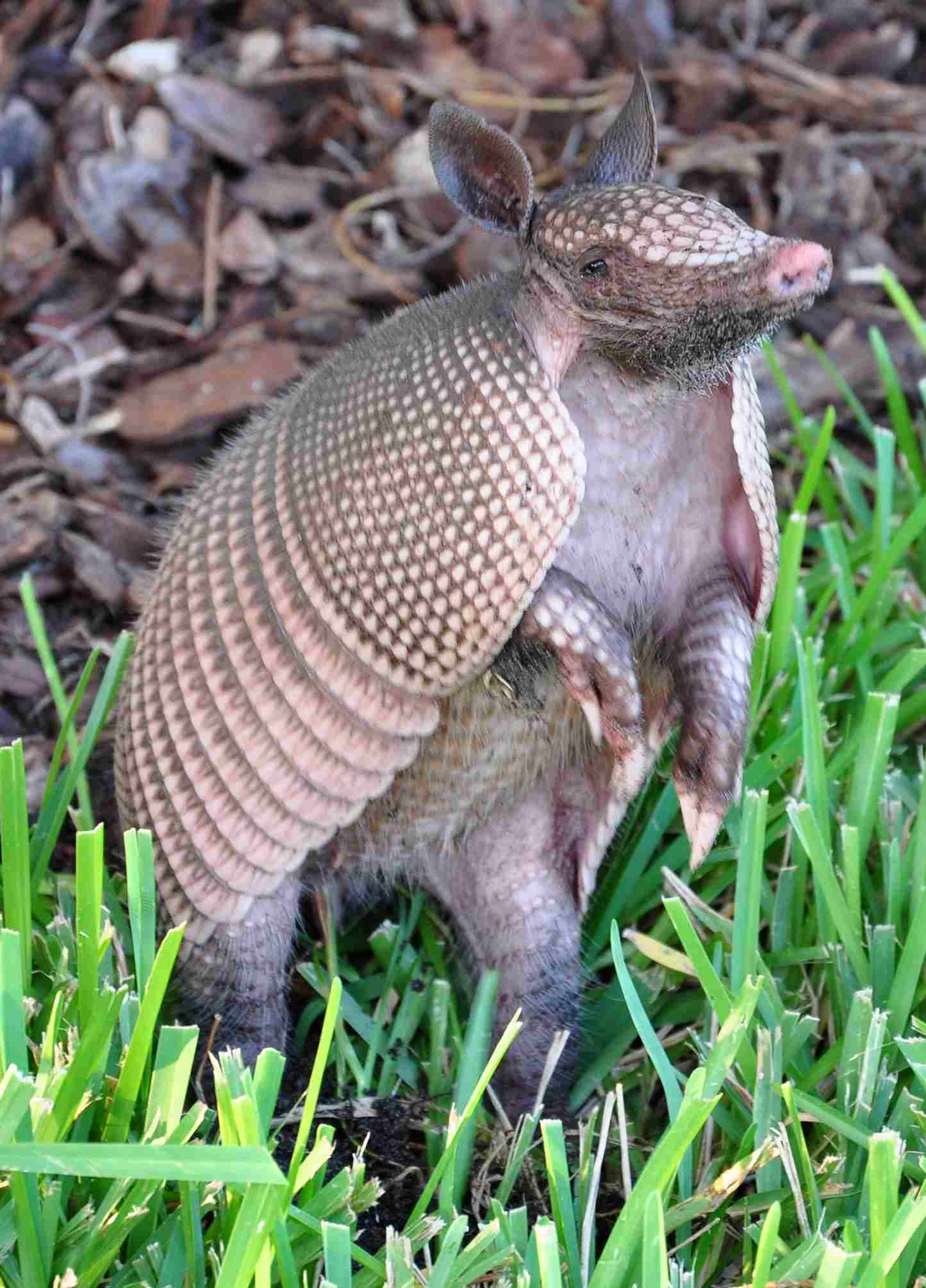
Pangolin:
Ranges in size from 30 to 100 centimeters, depending on the species.
Weighs between 1 to 35 kilograms.
Armadillo:
Varies widely in size, from around 15 to 150 centimeters.
Weight can range from 0.1 to 60 kilograms.
Comparison: Pangolins generally exhibit a more uniform size range compared to the diverse sizes observed in armadillos, reflecting their ecological adaptations and evolutionary niches.
Ecological Implications: Size influences resource requirements, habitat selection, and potential predators. Smaller pangolins may navigate different terrains than larger armadillos, affecting their ecological impact.
4. Weight:
Pangolin:
Weights vary among species but generally range from 1 to 35 kilograms.
Armadillo:
Weight spans from 0.1 to 60 kilograms, depending on the species.
Comparison: Armadillos, with a broader weight range, display adaptability to diverse ecological niches compared to pangolins, which exhibit a more concentrated weight spectrum.
Ecological Implications: Weight affects energy requirements, mobility, and ecological roles. Heavier armadillos might have different impacts on their ecosystems compared to lighter pangolins.
5. Dentition:
Pangolin:
Lack teeth in their mouths; instead, possess powerful stomach muscles for grinding insects.
Armadillo:
Typically have small, peg-like teeth adapted for their omnivorous diet.
Comparison: Pangolins’ lack of teeth contrasts with armadillos, which possess specialized dentition for a broader diet that may include both insects and plant matter.
Ecological Implications: Differences in dentition reflect their dietary preferences, influencing their roles as consumers within their respective ecosystems.
6. Physical Offensive Advantages:
Pangolin:
Well-developed claws aid in digging for prey.
Scaled exterior provides protection against certain predators.
Armadillo:
Sharp claws assist in digging for food and creating burrows.
Some species exhibit the ability to roll into a ball, using their armored shell as a defensive mechanism.
Comparison: While both pangolins and armadillos utilize claws for offensive actions, armadillos have an additional defensive advantage with their ability to roll into a protective ball.
Ecological Implications: These offensive features are crucial for obtaining food resources and protection from predators, influencing their roles in shaping local insect populations and avoiding predation.
7. Physical Defensive Advantages:
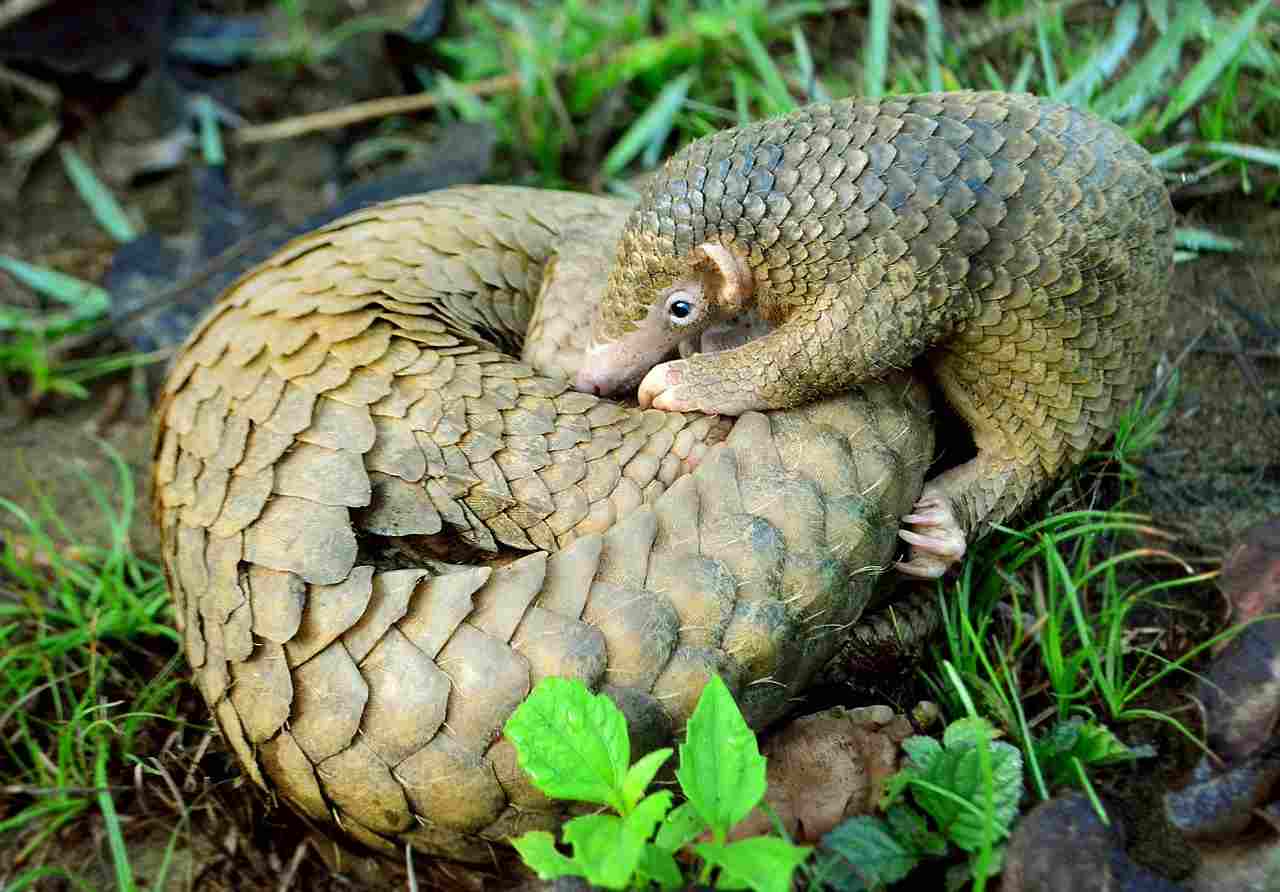
Pangolin:
Scales act as armor, providing defense against predators.
Can roll into a ball to protect the softer underside.
Armadillo:
Bony, armored shell protects against predators.
Rolling into a ball is a common defensive behavior.
Comparison: Both pangolins and armadillos possess effective defensive mechanisms, with pangolins relying on scales and armadillos on their hard, bony shells.
Ecological Implications: These defensive strategies impact predator-prey dynamics and contribute to the survival and ecological roles of pangolins and armadillos.
8. Speed (Km/hour or Mile/hour):
Pangolin:
Limited mobility on land, typically slow-moving.
Armadillo:
Varied speeds, with some species capable of reaching moderate speeds for short bursts.
Comparison: Armadillos generally exhibit more variability in speed, with some species capable of faster movement compared to the generally slow-paced pangolins.
Ecological Implications: Speed influences foraging efficiency, escape from predators, and overall ecological interactions. Differences in speed contribute to their respective ecological niches.
9. Agility:
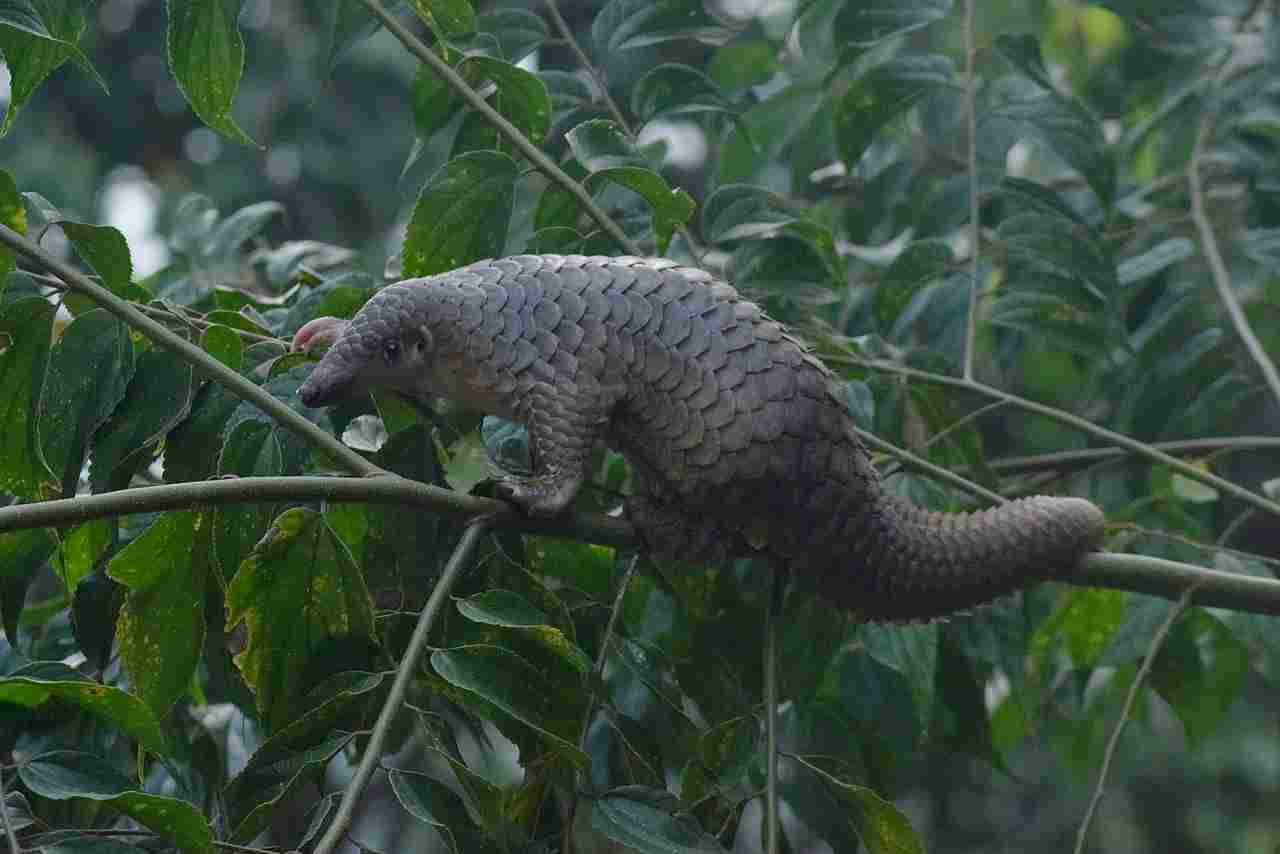
Pangolin:
Moderately agile on the ground, with a more robust build.
Armadillo:
Demonstrates agility, especially in navigating varied terrains with their more slender build.
Comparison: Armadillos, with a more slender and flexible build, generally exhibit greater agility compared to the more robust pangolins.
Ecological Implications: Agility is essential for navigating different landscapes, evading predators, and accessing food sources, influencing their ecological roles and adaptation to specific habitats.
10. Senses:
Pangolin:
Limited eyesight; relies heavily on a well-developed sense of smell.
Excellent hearing aids in detecting predators and potential prey.
Armadillo:
Generally have average eyesight.
Reliant on a keen sense of smell for foraging.
Comparison: While pangolins prioritize smell and hearing, armadillos rely more on their sense of smell for locating food.
Ecological Implications: These sensory adaptations influence their foraging behavior, helping them navigate their environments and locate essential resources.
11. Overall Physical Capacity:
Pangolin:
Well-adapted for climbing trees and accessing insect-rich habitats.
Limited speed and mobility on land.
Armadillo:
Strong digging abilities and versatile movement on land.
Climbing abilities are generally limited.
Comparison: Pangolins exhibit specialized adaptations for climbing, while armadillos excel in digging, reflecting their ecological niches.
Ecological Implications: These physical capacities contribute to their ecological roles, shaping how they interact with their surroundings and utilize available resources.
12. Habitat Preference(s) and Geographic Region:
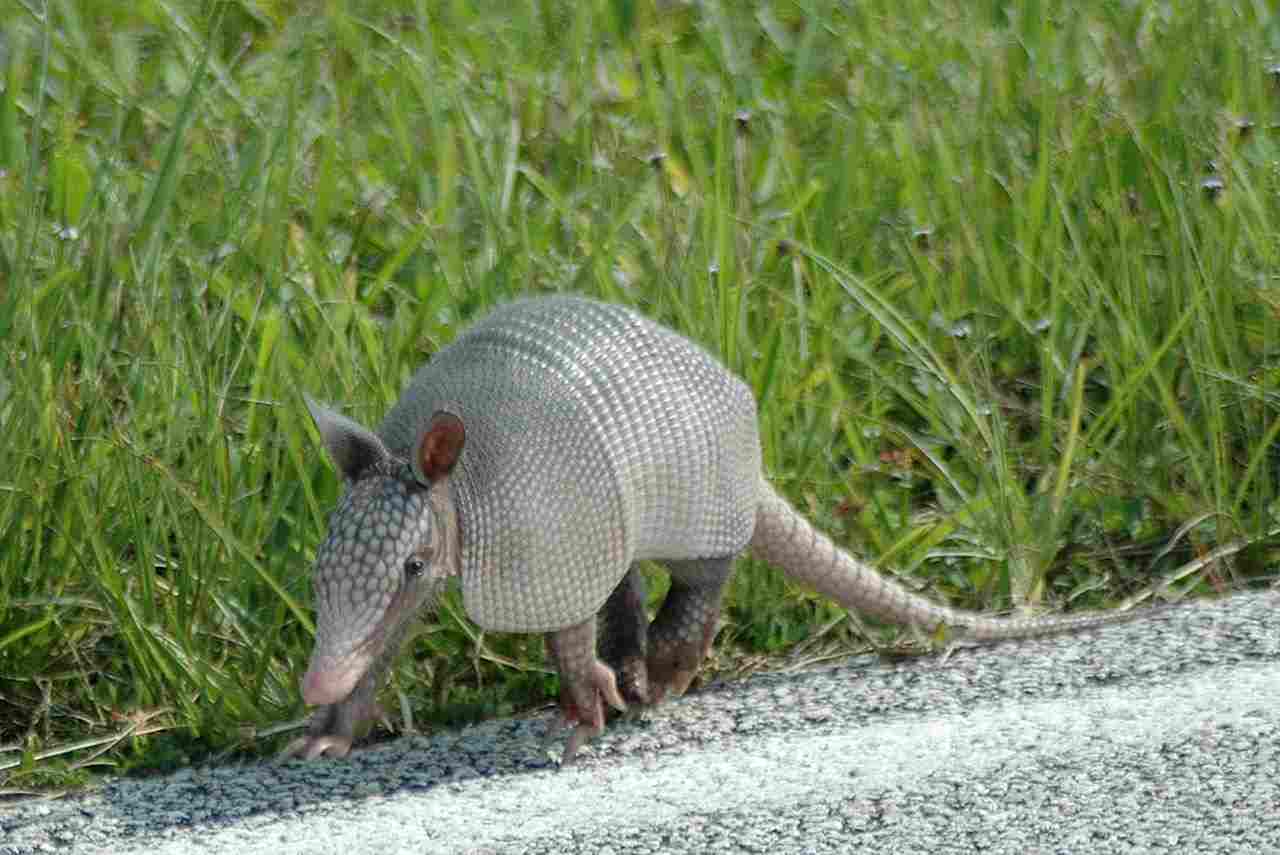
Pangolin:
Primarily found in tropical and subtropical regions of Africa and Asia.
Prefers forested areas and savannas.
Armadillo:
Diverse habitats including grasslands, rainforests, and deserts.
Commonly found in the Americas, from the southern United States to South America.
Comparison: Pangolins and armadillos exhibit distinct geographic distributions, with pangolins concentrated in Africa and Asia, while armadillos are prominent in the Americas.
Ecological Implications: Their habitat preferences influence the ecosystems they inhabit and the ecological dynamics within those regions.
13. Tracks:
Pangolin:
Often leaves distinctive tracks featuring claw marks and tail drags.
Tracks may reveal digging patterns in search of insects.
Armadillo:
Clawed footprints with distinct toe marks.
Trails may showcase burrowing activity.
Comparison: The tracks left by pangolins and armadillos vary, reflecting their different movement patterns and behaviors.
Ecological Implications: Tracking patterns can provide insights into their activities, such as foraging or digging, contributing to ecological research and monitoring efforts.
14. Lifespan:
Pangolin:
Typically, pangolins have a lifespan of 10 to 20 years in the wild.
Mortality rates can be influenced by factors like predation and habitat loss.
Armadillo:
Lifespan varies by species, generally ranging from 4 to 15 years in the wild.
Threats include predation, diseases, and environmental changes.
Comparison: Pangolins generally exhibit longer lifespans compared to armadillos, but both face similar threats that impact their longevity.
Ecological Implications: Lifespan influences population dynamics, reproductive strategies, and the potential ecological roles of these species in their respective habitats.
15. Mode of Feeding:
Pangolin:
Specialized for insectivory; primarily feeds on ants and termites.
Uses its long, sticky tongue to extract insects from nests.
Armadillo:
Omnivorous diet, including insects, small vertebrates, and plant matter.
Digs for insects, roots, and tubers with its strong claws.
Comparison: While both pangolins and armadillos include insects in their diet, pangolins are specialized insectivores, whereas armadillos exhibit a more omnivorous feeding behavior.
Ecological Implications: Differences in feeding habits impact their roles as consumers within ecosystems, potentially influencing the populations of prey and plants.
16. Intelligence:
Pangolin:
Limited studies on cognitive abilities, but they exhibit problem-solving skills in captivity.
Intelligent behaviors observed in tasks related to foraging and self-defense.
Armadillo:
Demonstrates problem-solving skills, particularly in finding food.
Displays adaptability to changing environments.
Comparison: Both pangolins and armadillos show signs of intelligence, with problem-solving abilities related to their foraging and survival strategies.
Ecological Implications: Intelligence impacts their ability to navigate and adapt to changing environments, influencing their ecological roles within their habitats.
17. Social Behavior:
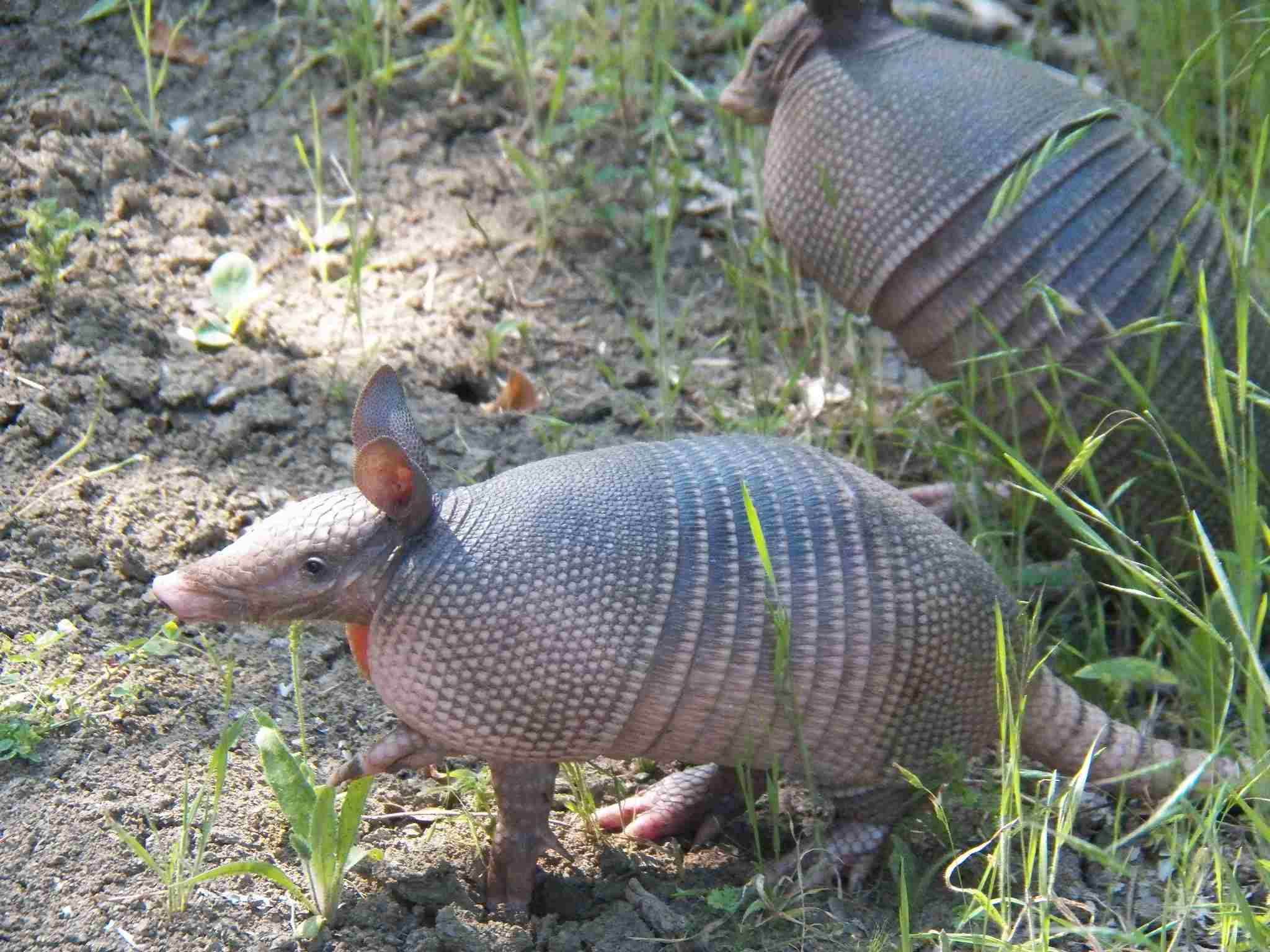
Pangolin:
Generally solitary animals, though some species may exhibit social behaviors.
Limited social interactions, with most contact occurring during mating.
Armadillo:
Varied social structures, ranging from solitary to more social species.
Some species form family groups or share burrows.
Comparison: Armadillos, with their varied social structures, contrast with the more solitary nature of many pangolin species.
Ecological Implications: Social behaviors affect their interactions with conspecifics, impacting aspects like reproduction, territory, and resource sharing within ecosystems.
18. Mode of Reproduction:
Pangolin:
Generally, solitary breeders, with limited social interactions outside of mating.
Typically give birth to a single offspring, and gestation periods vary among species.
Armadillo:
Diverse reproductive strategies; some species are solitary breeders, while others may form mating pairs or groups.
Number of offspring varies, and gestation periods differ among species.
Comparison: While both pangolins and armadillos exhibit diverse reproductive strategies, pangolins are typically solitary breeders, whereas armadillos may have more varied social structures during reproduction.
Ecological Implications: Reproductive strategies influence population dynamics and may impact the density and distribution of these species within their ecosystems.
19. Parental Behavior:
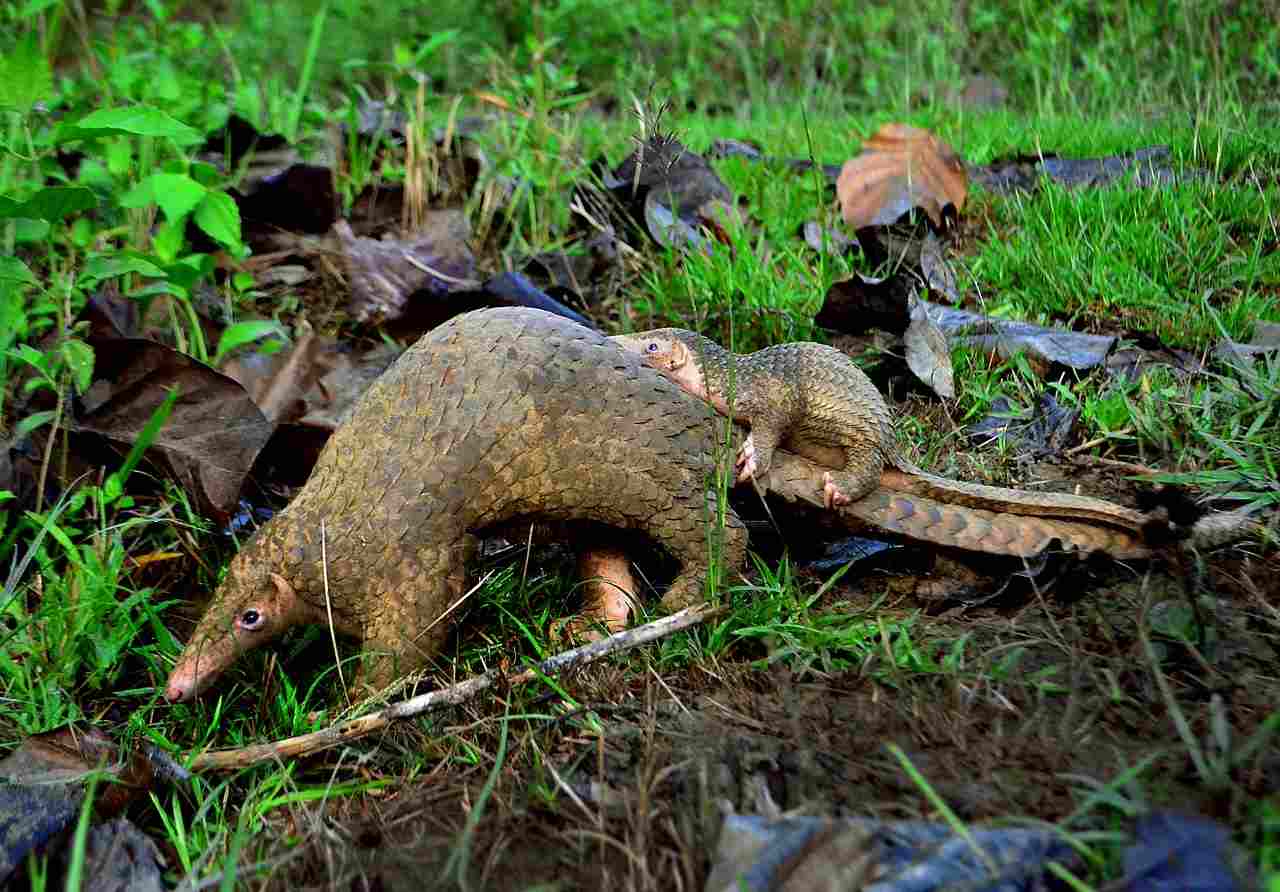
Pangolin:
Limited parental care, with mothers caring for their young for a period after birth.
Young pangolins often ride on their mother’s tail when moving.
Armadillo:
Varied parental care; some species exhibit extended care, while others have minimal involvement.
Mothers provide protection and nourishment to their offspring.
Comparison: Armadillos show more diverse parental behaviors, ranging from extended care to more limited involvement, compared to the generally limited parental care observed in pangolins.
Ecological Implications: Parental behavior influences the survival and development of offspring, impacting population dynamics and the overall ecological roles of these species.
20. Proximity to Human-Inhabited Areas:
Pangolin:
May inhabit areas near human settlements, leading to increased interactions.
Vulnerable to poaching due to traditional medicine beliefs and illegal wildlife trade.
Armadillo:
Some species adapt well to human-altered environments, including urban areas.
Encounter humans due to habitat overlap and sometimes cause damage to gardens.
Comparison: Both pangolins and armadillos can be found in proximity to human-inhabited areas, leading to increased human-wildlife interactions.
Ecological Implications: Human proximity can result in various challenges, including habitat loss, poaching, and potential conflicts, impacting the survival and behavior of these species.
21. Behavior Toward Humans:
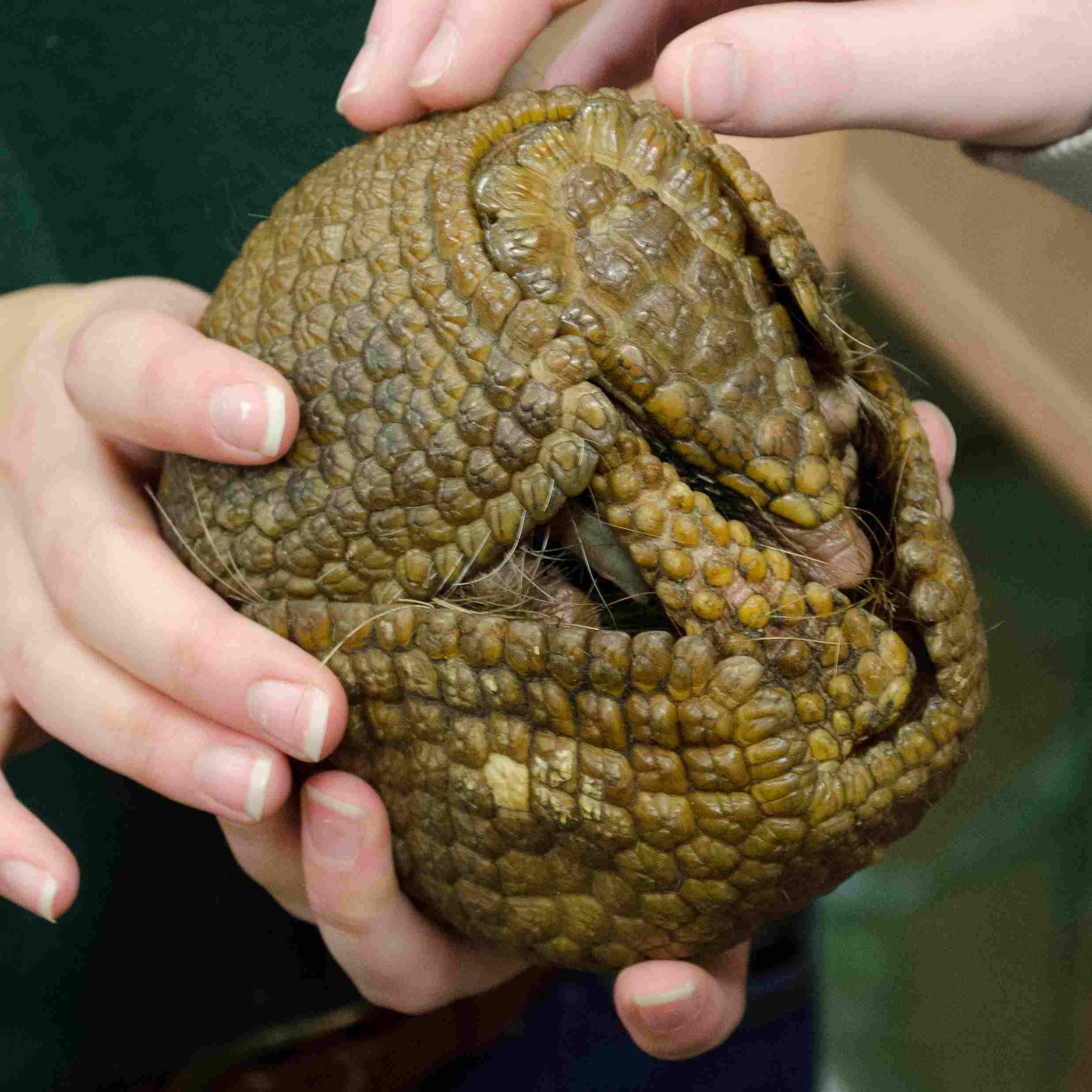
Pangolin:
Typically shy and elusive, avoiding human contact.
Defense mechanisms include rolling into a ball or emitting a foul-smelling liquid when threatened.
Armadillo:
Varied responses; some species may be more tolerant of human presence, while others may exhibit defensive behaviors.
May carry diseases, such as leprosy, posing a potential risk to humans.
Comparison: While both pangolins and armadillos generally avoid direct contact with humans, armadillos may show more varied responses, and some species pose potential health risks.
Ecological Implications: Human interactions can impact stress levels, behavior, and disease transmission, affecting the ecological roles and conservation challenges for these species.
22. Danger Posed to Humans:
Pangolin:
Generally not dangerous to humans; more likely to avoid confrontation.
May pose a threat indirectly if humans attempt to capture or handle them.
Armadillo:
Typically not aggressive, but some species may carry diseases like leprosy.
Can become defensive if cornered, potentially leading to scratches or bites.
Comparison: While neither pangolins nor armadillos are inherently dangerous, armadillos may carry zoonotic diseases, presenting a potential health risk to humans.
Ecological Implications: Human interactions with these species can impact conservation efforts, as fear or misconceptions may lead to unnecessary harm or persecution.
23. Associated Precautions:
Pangolin:
Caution is advised when handling pangolins due to their potential stress response.
Efforts focus on conservation to protect pangolin populations from illegal trade and habitat destruction.
Armadillo:
Precautions include avoiding direct contact, especially with species known to carry diseases.
Conservation measures consider the potential impact of urban development on armadillo habitats.
Comparison: Both pangolins and armadillos require precautions to ensure human safety and the well-being of these species, with specific considerations related to disease transmission and conservation efforts.
Ecological Implications: Responsible interactions and conservation measures contribute to the long-term health and survival of these species within their ecosystems.
24. Conservation Status:
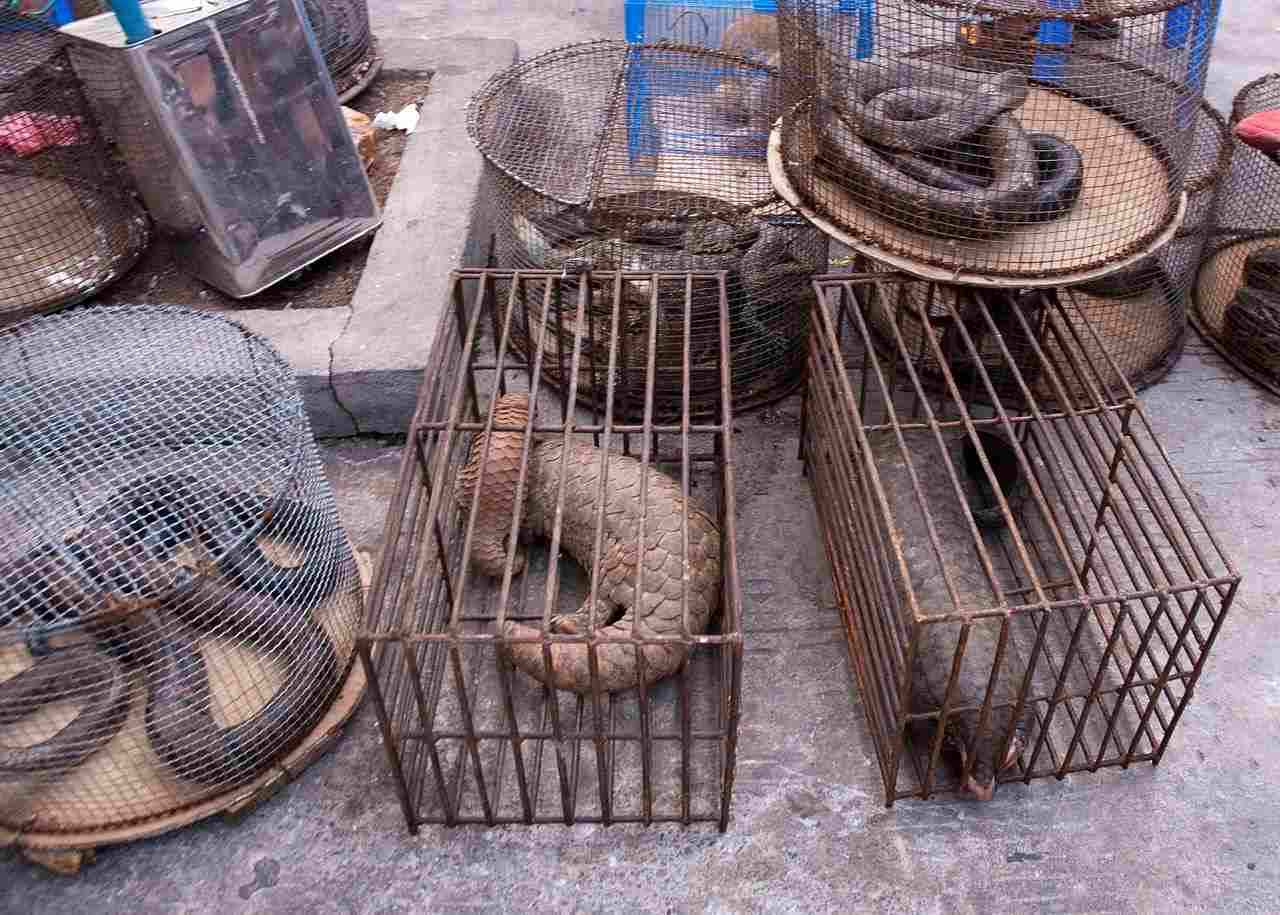
Pangolin:
Most pangolin species are listed as threatened or endangered due to habitat loss and illegal wildlife trade.
Conservation efforts focus on raising awareness, combating poaching, and establishing protective measures.
Armadillo:
Conservation status varies among species, with some facing threats from habitat destruction and hunting.
Population declines in certain regions prompt conservation initiatives.
Comparison: While both pangolins and armadillos face conservation challenges, pangolins are generally more critically endangered due to intense poaching and habitat loss.
Ecological Implications: Conservation actions are crucial to maintaining the ecological balance, as these species play unique roles in their respective ecosystems.
*Summary of Comparison
Taxonomy:
Pangolin: Order Pholidota, Family Manidae, Genus Manis.
Armadillo: Order Cingulata, Families Chlamyphoridae and Dasypodidae, Various Genera.
Appearance:
Pangolin: Mammalian appearance with protective keratin scales.
Armadillo: Characterized by a bony, armored shell divided into bands.
Size:
Pangolin: 30 to 100 centimeters, 1 to 35 kilograms.
Armadillo: 15 to 150 centimeters, 0.1 to 60 kilograms.
Weight:
Pangolin: Generally 1 to 35 kilograms.
Armadillo: 0.1 to 60 kilograms.
Dentition:
Pangolin: Lack teeth, powerful stomach muscles for grinding insects.
Armadillo: Small, peg-like teeth for omnivorous diet.
Physical Offensive Advantages:
Pangolin: Sharp claws for digging, scales for protection.
Armadillo: Powerful digging claws, bony armor.
Physical Defensive Advantages:
Pangolin: Rolling into a tight ball, protective scales.
Armadillo: Retracting into a hard shell, some species can roll into a ball.
Speed:
Both: Moderate speeds, not known for exceptional speed.
Agility:
Pangolin: Limited mobility on land.
Armadillo: Versatile movement on land, particularly in digging.
Senses:
Pangolin: Limited eyesight, relies on smell and hearing.
Armadillo: Average eyesight, keen sense of smell.
Overall Physical Capacity:
Pangolin: Well-adapted for climbing and accessing insect-rich habitats.
Armadillo: Strong digging abilities and versatile land movement.
Habitat Preference(s) and Geographic Region:
Pangolin: Africa and Asia, forested areas and savannas.
Armadillo: Americas, diverse habitats including grasslands, rainforests, and deserts.
Tracks:
Pangolin: Claw marks and tail drags, digging patterns.
Armadillo: Clawed footprints with distinct toe marks, trails showcasing burrowing.
Lifespan:
Pangolin: 10 to 20 years.
Armadillo: 4 to 15 years.
Mode of Feeding:
Pangolin: Insectivores, using a long tongue to extract insects.
Armadillo: Omnivores, digging for insects, roots, and tubers.
Intelligence:
Both: Display problem-solving skills related to foraging and survival.
Social Behavior:
Pangolin: Generally solitary, limited social interactions.
Armadillo: Varied social structures, ranging from solitary to social.
Mode of Reproduction:
Pangolin: Generally solitary breeders, give birth to a single offspring.
Armadillo: Diverse reproductive strategies, varying social structures.
Parental Behavior:
Pangolin: Limited parental care, mothers care for young for a period.
Armadillo: Varied parental care, some exhibit extended care.
Proximity to Human-Inhabited Areas:
Both: Inhabit areas near human settlements, leading to increased interactions.
Behavior Toward Humans:
Both: Generally avoid direct contact, with varied responses.
Danger Posed to Humans:
Both: Generally not dangerous, but armadillos may carry diseases.
Associated Precautions:
Both: Caution required when handling, with specific considerations for diseases.
Conservation Status:
Pangolin: Generally more critically endangered due to habitat loss and illegal trade.
Armadillo: Varies among species, facing threats from habitat destruction and hunting.
Conclusion
I. Similarities:
Both pangolins and armadillos exhibit adaptations for defense, with pangolins relying on scales and armadillos on their bony shells.
Human-wildlife interactions pose challenges, including habitat encroachment and potential threats to these species.
II. Differences:
– Pangolins are generally more solitary with limited parental care, while armadillos display diverse social structures and varied parental behaviors. – Conservation status varies, with pangolins facing a more critical endangerment due to illegal trade, emphasizing the need for targeted conservation efforts.
